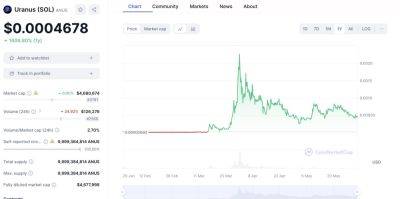What's going to be different with the halving of Bitcoin this time?
The fourth Bitcoin halving event is almost upon us with, if history is any indicator, the cryptocurrency likely to see a post-halving surge.
Bitcoin halving is an event that takes place approximately every four years, which sees the number of bitcoins released as mining rewards decrease by 50%. Currently the Bitcoin reward is 6.25 BTC. However, after the fourth halving, the reward will fall to 3.125 BTC.
As a result, the amount of Bitcoins in circulation becomes even scarcer, causing a surge in demand amongst investors. This is mainly because Bitcoin has a finite supply, with only a maximum of 21 million coins in circulation forever.
So far, there have been three Bitcoin halvings, with the next one being expected on or around 19 or 20 April. The last Bitcoin halving happened on 11 May 2020, with the previous ones being on 9 July 2016 and 28 November 2012.
These halvings are pre-programmed into Bitcoin's blockchain software and usually happen once every 210,000 blocks mined. Due to the uncertainty of how long it will take to mine the next 210,000 blocks, following the previous Bitcoin halving event, it is very difficult to predict the exact date of the next halving.
However, an approximate estimate can be made based on the average amount of time it usually takes to mine one block. Currently, it takes an average of 10 minutes to mine one Bitcoin block, with 834,327 blocks already having been mined as of 17 April.
A Bitfinex report released on 15 April suggests that investors could be buying up more bitcoin now in anticipation of the cryptocurrency's value surging in the next few months.
"As the Bitcoin halving draws near - expected by Saturday 20 April-the amount of BTC leaving exchanges has hit the highest point since January
Read more on euronews.com
 euronews.com
euronews.com




















